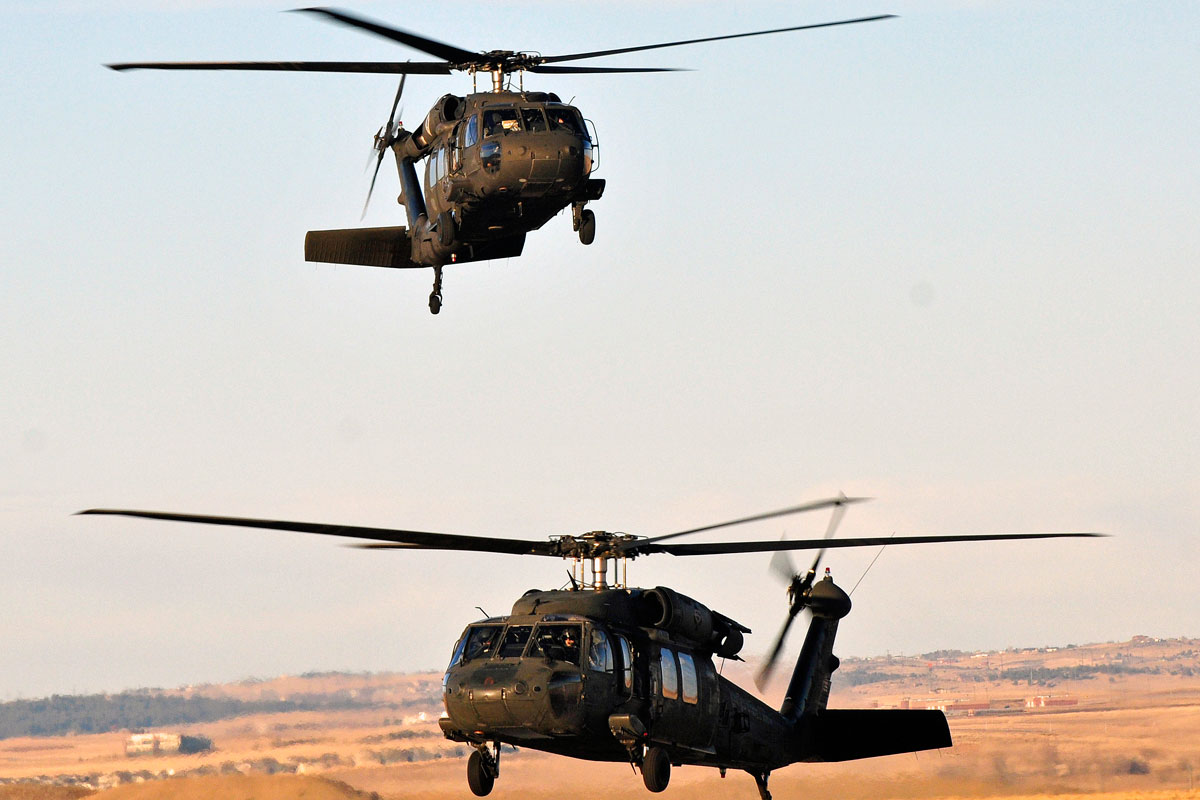Browsing Uh 60 Helicopter Regulations and Conformity Needs

Regulatory Framework Review
The regulative structure regulating UH-60 helicopter operations encompasses a complex set of requirements and regulations established by air travel authorities. These regulations are developed to guarantee the reliable and risk-free procedure of UH-60 helicopters in various settings. The Federal Aeronautics Management (FAA) plays a main duty in developing and applying these regulations, which cover a wide variety of functional elements, including airworthiness criteria, pilot certifications, maintenance demands, and operational treatments.
Conformity with these regulations is necessary for helicopter operators to keep the highest degree of safety and security and functional integrity. Failing to stick to these regulations can cause severe consequences, including crashes, injuries, and regulative permissions. As a result, helicopter operators must remain educated about the current regulative growths and make certain that their operations are in full conformity with all applicable policies and criteria.
Airworthiness Instructions and Assessments
Among the governing structure governing UH-60 helicopter operations, an essential focus pushes conformity with Airworthiness Directives and carrying out extensive assessments to support security requirements and functional reliability. Airworthiness Directives (ADs) are provided by air travel authorities to attend to harmful problems in airplane, consisting of the UH-60 helicopter, and required details actions to be taken by drivers or proprietors. Compliance with ADs is necessary, and failing to follow these regulations can lead to major consequences, including grounding of the aircraft.
Regular inspections are extremely important to ensuring the airworthiness of UH-60 helicopters. By sticking to a rigorous assessment routine, drivers can detect and resolve potential problems immediately, thus enhancing the security and dependability of UH-60 helicopter procedures.
Pilot Qualifications and Training

Pilot training for UH-60 helicopters is comprehensive and covers a large range of topics, including airplane systems, emergency situation procedures, navigation, and mission-specific training. In addition, pilots undergo simulator training to practice numerous emergency situation scenarios in a controlled setting. This training aids pilots develop the essential abilities to handle difficult scenarios effectively.


Furthermore, ongoing training and specialist development are important for UH-60 pilots to remain existing with the current guidelines, modern technology, and finest methods. By buying pilot certifications and training, operators can improve safety, optimize performance, and make certain compliance with regulatory demands in the procedure of UH-60 helicopters.
Operational Limitations and Demands
Pilot credentials and training serve as the structure for recognizing the functional limitations and demands related to UH-60 helicopter procedures (uh 60). These functional restrictions are implemented to make sure the safety and security of the crew, travelers, and the aircraft itself. Functional constraints might include aspects such as weather, weight limitations, elevation constraints, and functional limits. It is crucial for pilots to be well-versed in these constraints to make educated decisions throughout trip operations. Additionally, go to this website conformity requirements, such as adhering to specific trip paths, interaction procedures, and emergency situation treatments, are crucial for keeping operational security and governing compliance. Pilots need to remain present with all functional restrictions and needs through routine training, rundowns, and evaluates to mitigate threats and ensure secure and reliable UH-60 helicopter procedures. By prioritizing adherence to these operational guidelines, pilots can enhance the overall security and performance of their objectives while supporting governing requirements.
Emergency Situation Procedures and Conformity Testing
Efficient emergency procedures and thorough conformity screening are crucial parts of preserving operational security and governing adherence in UH-60 helicopter procedures. Emergency situation treatments incorporate procedures for different situations, including engine failings, fires, hydraulic issues, and more. Pilots and crew participants should be skilled in these treatments to react swiftly and effectively in emergency situations. Regular compliance screening makes sure that the helicopter fulfills all regulative requirements stated by aeronautics authorities. This screening includes comprehensive inspections, checks, and assessments to verify that the airplane is airworthy and in conformity with all appropriate policies.
Compliance testing also reaches tools onboard the UH-60, such as communication systems, navigating tools, and safety gear. Guaranteeing that all equipment is functioning appropriately and fulfills regulative criteria is crucial for safe procedures. In addition, compliance testing might entail simulations of emergency scenarios to assess the crew's action and the helicopter's efficiency under stress. By focusing on emergency situation treatments and conformity screening, UH-60 operators can mitigate dangers and demonstrate their commitment to security and governing compliance.
Conclusion
Finally, adherence to regulative structure, compliance with airworthiness instructions, pilot qualifications and training, functional constraints, and emergency situation treatments are vital for navigating the my explanation laws and demands of running a UH-60 helicopter. uh 60. It is essential for drivers to focus on safety and security and make certain complete conformity with all relevant guidelines to keep the airworthiness and operational honesty of the aircraft
Browsing the governing landscape bordering UH-60 helicopter operations demands a nuanced understanding of the elaborate internet of regulations and conformity requirements.Compliance with these guidelines is necessary for helicopter drivers to maintain the highest levels of security and functional integrity.Among the regulatory structure controling UH-60 helicopter procedures, an essential focus exists on compliance with Airworthiness Directives and performing comprehensive evaluations to maintain security criteria next and functional reliability.Efficient emergency procedures and complete compliance testing are critical parts of keeping operational security and regulative adherence in UH-60 helicopter operations. Routine compliance testing makes sure that the helicopter meets all regulatory needs set forth by air travel authorities.